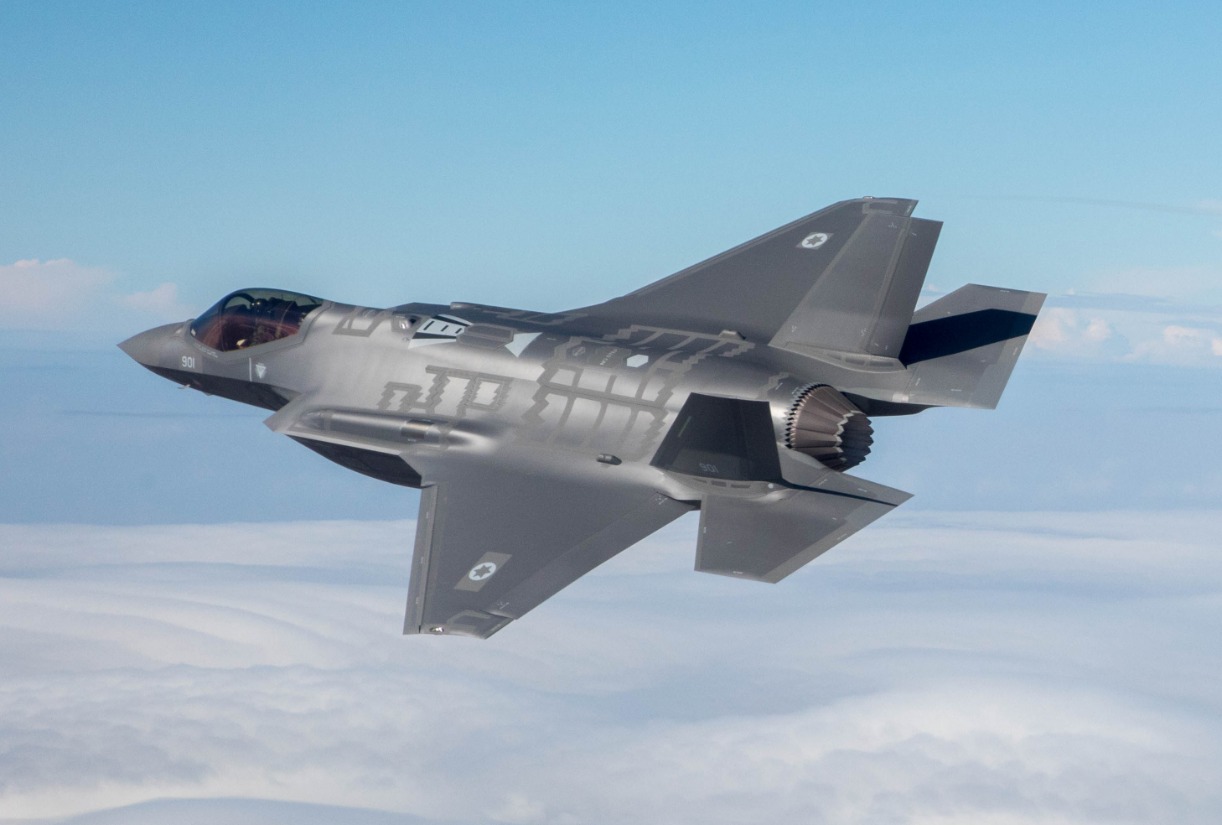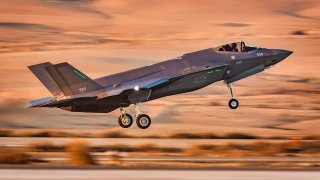F-35I Adir: Israel Has a Special Stealth Fighter Even America Doesn't Fly
The F-35I Adir’s unique features like enhanced electronic warfare systems and Israeli-made components make it a formidable force against regional adversaries, solidifying its pivotal role in Israel's defense strategy amidst rising regional tensions.
Summary: Over the weekend, Iran escalated tensions by launching over 300 drones and missiles at Israel. Despite the successful interception of most projectiles by Israel’s defense systems, several missiles hit the Nevatim Airbase, targeting the F-35I Adir fighters, known for their advanced capabilities. These aircraft, crucial in maintaining Israeli air superiority, have been instrumental against Iranian threats previously, including intercepting UAVs aimed at Israel. The F-35I Adir’s unique features like enhanced electronic warfare systems and Israeli-made components make it a formidable force against regional adversaries, solidifying its pivotal role in Israel's defense strategy amidst rising regional tensions.
Israel’s F-35I Adir: At the Forefront of Defense Against Iranian Strike
After Iran launched drones and missiles at Israel last weekend, tensions in the Middle East are ramping up.
Iran deployed more than 300 projectiles toward the Jewish state on April 13 – a combination of unmanned aerial vehicles, cruise missiles, and ballistic missiles. While 99% of the weapons were intercepted by the IDF and its allies, several ballistic missiles evaded Israel’s Arrow and Iron Dome air defense systems. These sophisticated and fast weapons inflicted minor damage to the Israeli Air Force’s Nevatim Airbase – home to the F-35I Adir. Clearly, the IAF’s fleet of specialized fifth-generation fighters was the target of Tehran’s wrath, and for good reason.
The F-35 Joint Strike Fighter is widely recognized as the world’s most advanced fighter platform. Although the U.S. Marine Corps, Air Force, and Navy fly the largest number of the highly exported Lightning II, these services were not the first to dedicate the platform to combat. In 2018, the modified F-35I Adir variant flew in an operation for the Israeli Air Force.
According to the IAF, the Adir carried out strikes inside Syria targeting Iranian military infrastructure. In 2021, Israel’s Adirs also became the first F-35s to destroy airborne targets. This occurred when the IAF’s F-35s intercepted a pair of Iranian UAVs that were headed for Israeli airspace. Israeli officials said that the UAVs, believed to be Shahed 197 drones, were taken down far beyond the country’s airspace.
Over the weekend, the Adir was again instrumental in thwarting Iran. Footage showed the fifth-generation fighters returning from a successful interception mission. Israel’s fleet of F-35s did not just carry out defensive missions. According to reports, the Adirs also struck military outposts belonging to Hezbollah.
What Makes the F-35I Adir Such a Threat to Iran?
Israel’s one-of-a-kind F-35 variant ensures air superiority over the country’s region. The “Mighty One” aircraft can trace its origins back to 2010, when Israel became the first country outside of the Joint Strike Fighter’s nine-nation co-development group to acquire the fighter. The Adir was specially modified by manufacturer Lockheed Martin with Israel’s distinct security needs in mind. Then-Israeli Defense Minister Ehud Barak insisted on Israeli industrial participation, which led to the airframe’s components being assembled and manufactured locally.

Perhaps the Adir’s greatest feature is its electronic warfare system (EWS). Domestically produced sensors and countermeasures were incorporated in the platform, in addition to helmet-mounted displays. The Adir variants also have datalink functionality specifically suited to Israel’s needs, as well as extra enhancements made to the jet’s data gathering and processing capabilities.
The platform’s advanced EWS ensures the aircraft an edge over adversaries. Since Israel’s primary enemies include regional proxy groups like Hezbollah and Hamas that simply cannot match its aerial abilities, the tailored EWS system is important for securing Israel’s borders.
Each of these fighters is armed with air-to-air weapons including the AIM-9X Sidewinder and AIM-120D. These weapons could have been to destroy Iran’s ballistic missiles over the weekend.
Since the Adir platform is arguably the most significant component of Israel’s aerial fleet, it poses the largest threat to the Iranian regime. While Tehran was only able to minimally impact the IAF’s Nevatim air base over the weekend, the country’s growing stockpile of long-range ballistic missiles is concerning.
About the Author: Maya Carlin
Maya Carlin, National Security Writer with The National Interest, is an analyst with the Center for Security Policy and a former Anna Sobol Levy Fellow at IDC Herzliya in Israel. She has by-lines in many publications, including The National Interest, Jerusalem Post, and Times of Israel. You can follow her on Twitter: @MayaCarlin.


